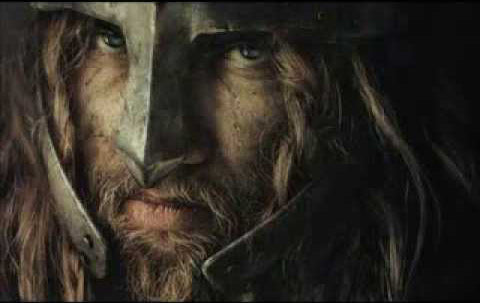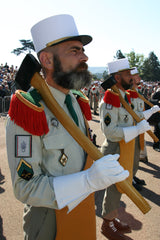Beard History
The epic history and legend of the beard goes back a long, long way. In prehistoric times, scientists believe that men grew long beards for three main reasons. First, for warmth. The beard provides the face with protection from the elements, and a natural shield from the more delicate parts of the face around the mouth and lips. Next, prehistoric men grew their beards for protection. The thick, rich beards that they could grow were so full that they helped cushion blows to the face. Concussions from a fistfight? Not with the right beard, my friend.
Prehistoric men also wore their beards as a sign of intimidation, something that has carried through the centuries. Much like the mane of the majestic Lion, the beard creates a manlier, more testosterone-infused look by creating the appearance of a thicker, stronger-looking jaw line. As such, the beards of prehistoric men were regarded as a sign of honour. They were only ever cut as punishment, to mark the men who were not worthy of keeping their beards because of what they’d done. Only a man who acted and behaved with honour was entitled to keep his beard.
The beard has meant a great deal to many cultures. Above all else, however, the beard has always stood as a symbol of masculinity with tremendous importance. In Celtic tribes, for example, the beard was so revered that Otto the Great swore by his beard whenever he had something of great seriousness and importance to say. If men were to have to swear on their facial hair today, the world might be a much more honest and trustworthy place.

In ancient India and most eastern cultures, beards were venerated at a higher level than almost anywhere else. Long beards stood for dignity and wisdom, strength and courage, and this is often the case today. Beards in these places were so revered that they were also used in the prosecution of crimes. A typical punishment for licentiousness or committing adultery was to have one’s beard cut off, to show those around him that he was not worthy of the honour that is having a beard. In addition, men also pledged their beards for the payment of a debt.
The beard is a very personal thing. During the middle ages, for example, touching another man’s beard was downright offensive, and could even be grounds for a duel. Some might say that this is still the case today, although there are far fewer duels in 2016 than there were a thousand years ago.
In ancient Egypt, the beard was regarded as a symbol of wealth, power, and importance. In fact, the richest and most powerful men during those times would have their beards dyed, and plaited with interwoven gold thread. The ancient Greek and Mesopotamian cultures also dressed their beards and treated them with an incredible amount of respect. This early form of grooming has been replaced with magnificent waxes, oils, and balms that can now help men keep their beard looking its absolute best at all times.
As the Vikings explored, raided and traded their way across Europe and other areas of the world, they did so with some of the most legendary beards in history. They were advanced seafarers, and they used their beards to strike fear into the hearts of their opponents, wherever they went. Recent archaeological discoveries show that the Vikings took great pride in their appearance and their personal grooming, and didn’t just let their facial hair run wild. They are widely regarded now as having had beards which were far more manicured than we may have previously thought. And as you know, a well-manicured, a much cared-for beard is the best kind of beard there is.

During the Middle Ages, a proper beard displayed a knight’s virility and honour. The Catholic clergy, on the other hand, were always clean-shaven as a symbol of their celibacy and clearly to signal the opposite of what the great knights stood for.
The beard, clearly, has always been serious business. This is perhaps even more evident when it comes to the military application of facial hair. For centuries, you see, akin to the knights of yore, soldiers from all over the world have been engaging their whiskers for battle.
In the 18th and 19th centuries, French troops had very specific types of facial hair for different roles. Their elite troops, known as Grenadiers, always wore large, manicured moustaches. Infantry chasseurs wore moustaches and goatees, and gendarmes were in fact mandated to keep a moustache until 1933. During the First World War, French troops were known by the nickname “poilu,” meaning “the hairy one,” in reference to their ever-present facial hair.
Following this trend of virility and aggression, troops in the British Army were mandated to have a moustache from 1860 until 1916. Indeed, Command No. 1,695 of the King’s Regulations read that “the hair of the head will be kept short. The chin and the under lip will be shaved, but not the upper lip.”


Today, men are bringing the beard back in all its glorious forms. The beard is not just for the lumberjack or the woodsman anymore. Men from all walks of life are earning their wings and regaining command and control over the wild beard, cultivating it and bringing it to environments both urban and rural.
Statistics show that women are helpless against the primal urges that the beard brings forth in them as well. Surveys demonstrate that full-bearded men appear older, more respected, more powerful, and of a higher status than more non-bearded men.

